IBG Models 1/72 2 in 1: Romanian Barbarossa (PZL P.23A and PZL P.11F in Romanian Service) # 72530
 Spread the cost with Paypal Credit
0% for 24 months available on orders over £199
Spread the cost with Paypal Credit
0% for 24 months available on orders over £199
 Spread the cost with Klarna
0% for 24 months available on orders over £199
Spread the cost with Klarna
0% for 24 months available on orders over £199
![]()
PZL P.23A in Romanian Service
The PZL P.23A Karaś was a Polish light bomber and reconnaissance aircraft that saw significant use in Romanian service during Operation Barbarossa, the German invasion of the Soviet Union in 1941.
Initially acquired from Poland following the 1939 invasion, the PZL P.23A played a crucial role in the Royal Romanian Air Force’s efforts to support ground operations and provide battlefield reconnaissance.
Key Features:
Role: Light bomber and reconnaissance.
Engine: Bristol Pegasus radial engine, producing around 680 hp.
Armament: Typically equipped with fixed forward-firing machine guns, flexible rear machine guns, and a bomb load of up to 700 kg.
Service: Used for bombing, reconnaissance, and support missions on the Eastern Front, aiding Romanian and Axis ground forces.
Operational Use:
The P.23A's ability to carry out low-altitude bombing and reconnaissance missions made it valuable in disrupting Soviet troop movements and providing intelligence.
Although outdated by the standards of 1941, its versatility and availability were vital to Romanian operations in the early stages of Barbarossa.
PZL P.11F in Romanian Service
The PZL P.11F was a licensed version of the Polish P.11 fighter, adapted and produced in Romania by Industria Aeronautică Română (IAR).
As the backbone of the Romanian fighter force during the early phases of World War II, it saw extensive service during Operation Barbarossa, providing air cover, engaging Soviet aircraft, and protecting ground forces.
Key Features:
Role: Fighter aircraft.
Engine: Gnome-Rhône 9K radial engine, producing around 560 hp.
Armament: Armed with two synchronized 7.92 mm machine guns mounted in the fuselage.
Service: Engaged in dogfighting, escort missions, and ground attack roles, especially valuable during the initial stages of the conflict on the Eastern Front.
Operational Use:
Despite being considered obsolete by 1941, the P.11F was integral in Romania’s air defense and offensive operations due to its agility and the skill of its pilots.
Played a significant role in providing air support for Romanian ground troops and participating in aerial battles against the Soviet Air Force.
Both the PZL P.23A and PZL P.11F, despite their dated designs, were pivotal in the early successes of Romanian forces during Operation Barbarossa.
They showcased Romania’s ability to effectively use existing resources and adapt older technology to meet the demands of modern warfare.
| SKU | IBG72530 |
|---|---|
| Manufacturer | IBG Models |
| Scale | 1/72 |
| EAN | 4544032893699 |
| Short Description | IBG Models 1/72 2 in 1: Romanian Barbarossa (PZL P.23A and PZL P.11F in Romanian Service) # 72530 |
-
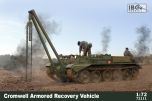 IBG Models 1/72 Cromwell Armored Recovery Vehicle # 72111Special Price £15.29 was £16.99 Save 10%
IBG Models 1/72 Cromwell Armored Recovery Vehicle # 72111Special Price £15.29 was £16.99 Save 10% -
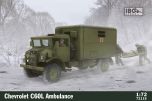 IBG Models 1/72 Chevrolet C60L Ambulance # 72115Special Price £12.78 was £14.20 Save 10%
IBG Models 1/72 Chevrolet C60L Ambulance # 72115Special Price £12.78 was £14.20 Save 10% -
 IBG Models 1/72 Focke-Wulf Fw-190D-9 JABO/STURM Rocket Hunter # 72544Special Price £20.25 was £22.50 Save 10%
IBG Models 1/72 Focke-Wulf Fw-190D-9 JABO/STURM Rocket Hunter # 72544Special Price £20.25 was £22.50 Save 10% -
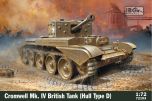 IBG Models 1/72 Cromwell Mk.IV British Tank (Hull type D) # 72103Special Price £15.48 was £17.20 Save 10%
IBG Models 1/72 Cromwell Mk.IV British Tank (Hull type D) # 72103Special Price £15.48 was £17.20 Save 10% -
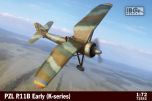 IBG Models 1/72 PZL P.11B Early (K-series) # 72552Special Price £10.98 was £12.20 Save 10%
IBG Models 1/72 PZL P.11B Early (K-series) # 72552Special Price £10.98 was £12.20 Save 10% -
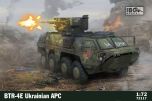 IBG Models 1/72 BTR-4E Ukrainian APC # 72117Special Price £16.02 was £17.80 Save 10%
IBG Models 1/72 BTR-4E Ukrainian APC # 72117Special Price £16.02 was £17.80 Save 10% -
 IBG Models 1/72 Luftwaffe Starter Car And Transport Crate For Engine (Jumo 213 Included) # 72547Special Price £10.80 was £12.00 Save 10%
IBG Models 1/72 Luftwaffe Starter Car And Transport Crate For Engine (Jumo 213 Included) # 72547Special Price £10.80 was £12.00 Save 10% -
 IBG Models 1/72 PZL P.24A/F Fighter in Turkish Service # 72553Special Price £11.43 was £12.70 Save 10%
IBG Models 1/72 PZL P.24A/F Fighter in Turkish Service # 72553Special Price £11.43 was £12.70 Save 10% -
 IBG Models 1/72 Focke-Wulf Fw-190D-11 Sorau Factory Series # 72533Special Price £20.25 was £22.50 Save 10%
IBG Models 1/72 Focke-Wulf Fw-190D-11 Sorau Factory Series # 72533Special Price £20.25 was £22.50 Save 10% -
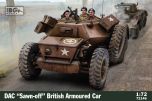 IBG Models 1/72 DAC "Sawn-off" British Armoured Car # 72146Special Price £13.49 was £14.99 Save 10%
IBG Models 1/72 DAC "Sawn-off" British Armoured Car # 72146Special Price £13.49 was £14.99 Save 10% -
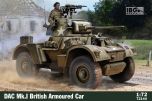 IBG Models 1/72 DAC Mk.I British Armoured Car # 72144Special Price £13.49 was £14.99 Save 10%
IBG Models 1/72 DAC Mk.I British Armoured Car # 72144Special Price £13.49 was £14.99 Save 10% -
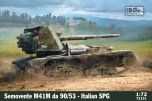 IBG Models 1/72 Semovente M41M da 90/53 - Italian Selfpropelled Gun # 72131Special Price £14.94 was £16.60 Save 10%
IBG Models 1/72 Semovente M41M da 90/53 - Italian Selfpropelled Gun # 72131Special Price £14.94 was £16.60 Save 10% -
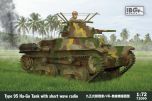 IBG Models 1/72 Type 95 Ha-Go Japanese Tank With Short Wave Radio # 72090Special Price £9.89 was £10.99 Save 10%
IBG Models 1/72 Type 95 Ha-Go Japanese Tank With Short Wave Radio # 72090Special Price £9.89 was £10.99 Save 10% -
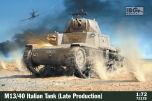 IBG Models 1/72 M13/40 Italian Tank (III Series - Late Production) # 72125Special Price £14.94 was £16.60 Save 10%
IBG Models 1/72 M13/40 Italian Tank (III Series - Late Production) # 72125Special Price £14.94 was £16.60 Save 10% -
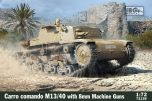 IBG Models 1/72 Carro Comando M13/40 with 8mm Breda Machine Guns # 72129Special Price £14.94 was £16.60 Save 10%
IBG Models 1/72 Carro Comando M13/40 with 8mm Breda Machine Guns # 72129Special Price £14.94 was £16.60 Save 10% -
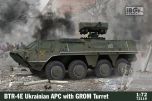 IBG Models 1/72 BTR-4E Ukrainian APC with GROM Turret # 72119Special Price £16.02 was £17.80 Save 10%
IBG Models 1/72 BTR-4E Ukrainian APC with GROM Turret # 72119Special Price £16.02 was £17.80 Save 10% -
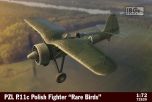 IBG Models 1/72 PZL P.11c Polish Fighter - Rare Birds # 72520Special Price £10.98 was £12.20 Save 10%
IBG Models 1/72 PZL P.11c Polish Fighter - Rare Birds # 72520Special Price £10.98 was £12.20 Save 10% -
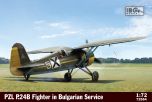 IBG Models 1/72 PZL P.24B Fighter in Bulgarian Service # 72554Special Price £11.43 was £12.70 Save 10%
IBG Models 1/72 PZL P.24B Fighter in Bulgarian Service # 72554Special Price £11.43 was £12.70 Save 10% -
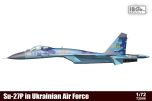 IBG Models 1/72 Sukhoi Su-27P in Ukrainian Air Force # 72906Special Price £29.97 was £33.30 Save 10%
IBG Models 1/72 Sukhoi Su-27P in Ukrainian Air Force # 72906Special Price £29.97 was £33.30 Save 10% -
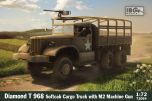 IBG Models 1/72 Diamond T 968 Soft Cab Cargo Truck with M2 MG # 72084Special Price £13.49 was £14.99 Save 10%
IBG Models 1/72 Diamond T 968 Soft Cab Cargo Truck with M2 MG # 72084Special Price £13.49 was £14.99 Save 10% -
 IBG Models 1/72 Cromwell Armored Recovery Vehicle # 72111Special Price £15.29 was £16.99 Save 10%
IBG Models 1/72 Cromwell Armored Recovery Vehicle # 72111Special Price £15.29 was £16.99 Save 10% -
 IBG Models 1/72 Chevrolet C60L Ambulance # 72115Special Price £12.78 was £14.20 Save 10%
IBG Models 1/72 Chevrolet C60L Ambulance # 72115Special Price £12.78 was £14.20 Save 10% -
 IBG Models 1/72 Focke-Wulf Fw-190D-9 JABO/STURM Rocket Hunter # 72544Special Price £20.25 was £22.50 Save 10%
IBG Models 1/72 Focke-Wulf Fw-190D-9 JABO/STURM Rocket Hunter # 72544Special Price £20.25 was £22.50 Save 10% -
 IBG Models 1/72 Cromwell Mk.IV British Tank (Hull type D) # 72103Special Price £15.48 was £17.20 Save 10%
IBG Models 1/72 Cromwell Mk.IV British Tank (Hull type D) # 72103Special Price £15.48 was £17.20 Save 10% -
 IBG Models 1/72 PZL P.11B Early (K-series) # 72552Special Price £10.98 was £12.20 Save 10%
IBG Models 1/72 PZL P.11B Early (K-series) # 72552Special Price £10.98 was £12.20 Save 10% -
 IBG Models 1/72 BTR-4E Ukrainian APC # 72117Special Price £16.02 was £17.80 Save 10%
IBG Models 1/72 BTR-4E Ukrainian APC # 72117Special Price £16.02 was £17.80 Save 10% -
 IBG Models 1/72 Luftwaffe Starter Car And Transport Crate For Engine (Jumo 213 Included) # 72547Special Price £10.80 was £12.00 Save 10%
IBG Models 1/72 Luftwaffe Starter Car And Transport Crate For Engine (Jumo 213 Included) # 72547Special Price £10.80 was £12.00 Save 10% -
 IBG Models 1/72 PZL P.24A/F Fighter in Turkish Service # 72553Special Price £11.43 was £12.70 Save 10%
IBG Models 1/72 PZL P.24A/F Fighter in Turkish Service # 72553Special Price £11.43 was £12.70 Save 10% -
 IBG Models 1/72 Focke-Wulf Fw-190D-11 Sorau Factory Series # 72533Special Price £20.25 was £22.50 Save 10%
IBG Models 1/72 Focke-Wulf Fw-190D-11 Sorau Factory Series # 72533Special Price £20.25 was £22.50 Save 10% -
 IBG Models 1/72 DAC "Sawn-off" British Armoured Car # 72146Special Price £13.49 was £14.99 Save 10%
IBG Models 1/72 DAC "Sawn-off" British Armoured Car # 72146Special Price £13.49 was £14.99 Save 10% -
 IBG Models 1/72 DAC Mk.I British Armoured Car # 72144Special Price £13.49 was £14.99 Save 10%
IBG Models 1/72 DAC Mk.I British Armoured Car # 72144Special Price £13.49 was £14.99 Save 10% -
 IBG Models 1/72 Semovente M41M da 90/53 - Italian Selfpropelled Gun # 72131Special Price £14.94 was £16.60 Save 10%
IBG Models 1/72 Semovente M41M da 90/53 - Italian Selfpropelled Gun # 72131Special Price £14.94 was £16.60 Save 10% -
 IBG Models 1/72 Type 95 Ha-Go Japanese Tank With Short Wave Radio # 72090Special Price £9.89 was £10.99 Save 10%
IBG Models 1/72 Type 95 Ha-Go Japanese Tank With Short Wave Radio # 72090Special Price £9.89 was £10.99 Save 10% -
 IBG Models 1/72 M13/40 Italian Tank (III Series - Late Production) # 72125Special Price £14.94 was £16.60 Save 10%
IBG Models 1/72 M13/40 Italian Tank (III Series - Late Production) # 72125Special Price £14.94 was £16.60 Save 10% -
 IBG Models 1/72 Carro Comando M13/40 with 8mm Breda Machine Guns # 72129Special Price £14.94 was £16.60 Save 10%
IBG Models 1/72 Carro Comando M13/40 with 8mm Breda Machine Guns # 72129Special Price £14.94 was £16.60 Save 10% -
 IBG Models 1/72 BTR-4E Ukrainian APC with GROM Turret # 72119Special Price £16.02 was £17.80 Save 10%
IBG Models 1/72 BTR-4E Ukrainian APC with GROM Turret # 72119Special Price £16.02 was £17.80 Save 10% -
 IBG Models 1/72 PZL P.11c Polish Fighter - Rare Birds # 72520Special Price £10.98 was £12.20 Save 10%
IBG Models 1/72 PZL P.11c Polish Fighter - Rare Birds # 72520Special Price £10.98 was £12.20 Save 10% -
 IBG Models 1/72 PZL P.24B Fighter in Bulgarian Service # 72554Special Price £11.43 was £12.70 Save 10%
IBG Models 1/72 PZL P.24B Fighter in Bulgarian Service # 72554Special Price £11.43 was £12.70 Save 10% -
 IBG Models 1/72 Sukhoi Su-27P in Ukrainian Air Force # 72906Special Price £29.97 was £33.30 Save 10%
IBG Models 1/72 Sukhoi Su-27P in Ukrainian Air Force # 72906Special Price £29.97 was £33.30 Save 10% -
 IBG Models 1/72 Diamond T 968 Soft Cab Cargo Truck with M2 MG # 72084Special Price £13.49 was £14.99 Save 10%
IBG Models 1/72 Diamond T 968 Soft Cab Cargo Truck with M2 MG # 72084Special Price £13.49 was £14.99 Save 10% -
 IBG Models 1/72 Cromwell Armored Recovery Vehicle # 72111Special Price £15.29 was £16.99 Save 10%
IBG Models 1/72 Cromwell Armored Recovery Vehicle # 72111Special Price £15.29 was £16.99 Save 10% -
 IBG Models 1/72 Chevrolet C60L Ambulance # 72115Special Price £12.78 was £14.20 Save 10%
IBG Models 1/72 Chevrolet C60L Ambulance # 72115Special Price £12.78 was £14.20 Save 10% -
 IBG Models 1/72 Focke-Wulf Fw-190D-9 JABO/STURM Rocket Hunter # 72544Special Price £20.25 was £22.50 Save 10%
IBG Models 1/72 Focke-Wulf Fw-190D-9 JABO/STURM Rocket Hunter # 72544Special Price £20.25 was £22.50 Save 10% -
 IBG Models 1/72 Cromwell Mk.IV British Tank (Hull type D) # 72103Special Price £15.48 was £17.20 Save 10%
IBG Models 1/72 Cromwell Mk.IV British Tank (Hull type D) # 72103Special Price £15.48 was £17.20 Save 10% -
 IBG Models 1/72 PZL P.11B Early (K-series) # 72552Special Price £10.98 was £12.20 Save 10%
IBG Models 1/72 PZL P.11B Early (K-series) # 72552Special Price £10.98 was £12.20 Save 10% -
 IBG Models 1/72 BTR-4E Ukrainian APC # 72117Special Price £16.02 was £17.80 Save 10%
IBG Models 1/72 BTR-4E Ukrainian APC # 72117Special Price £16.02 was £17.80 Save 10%


























